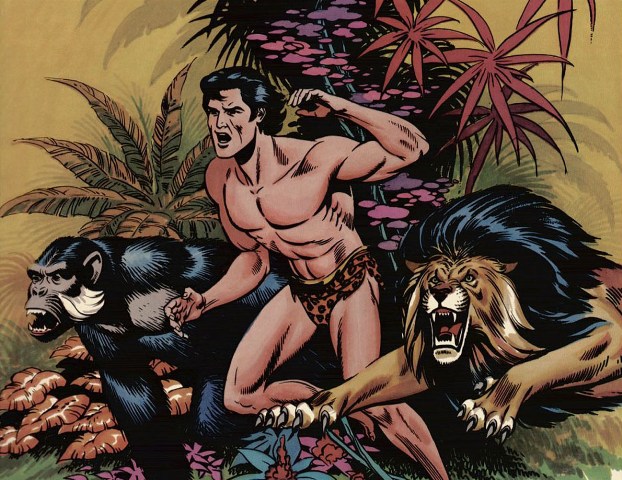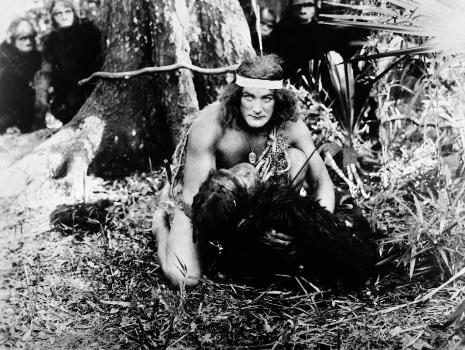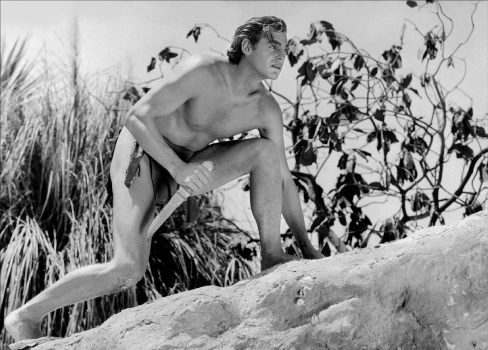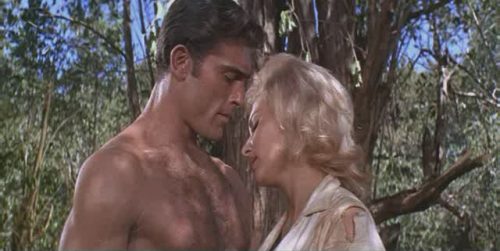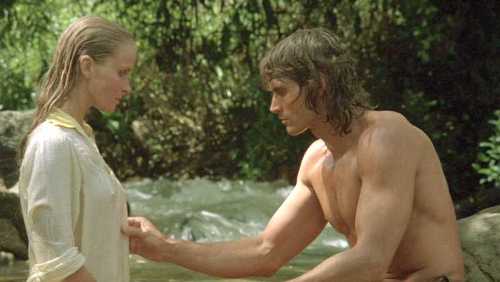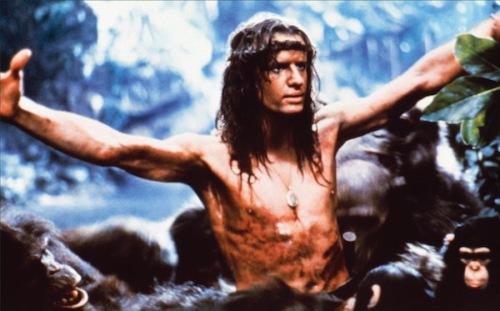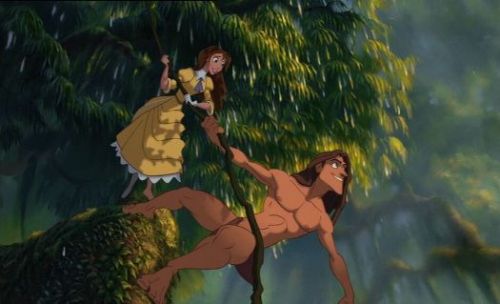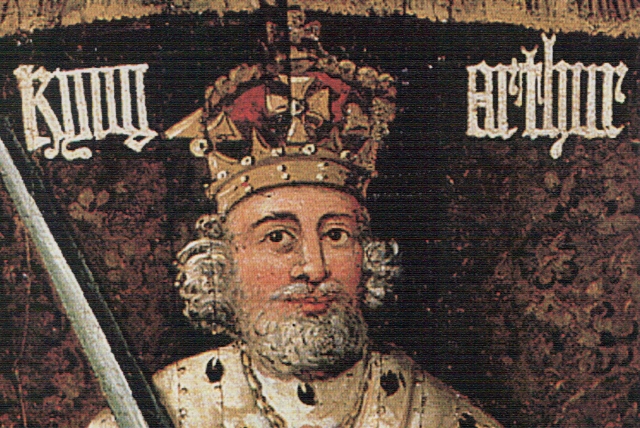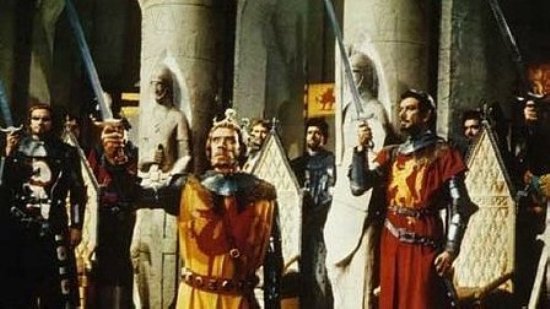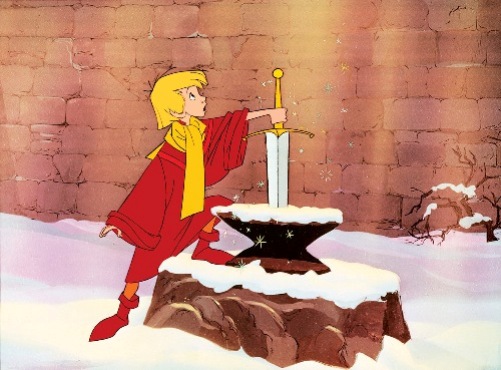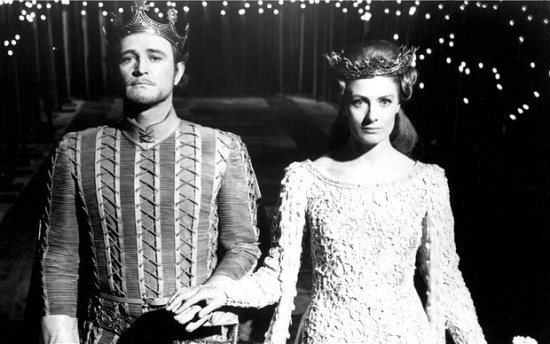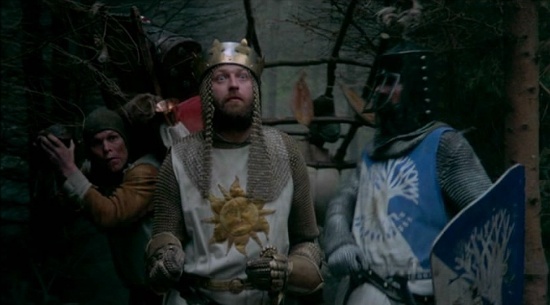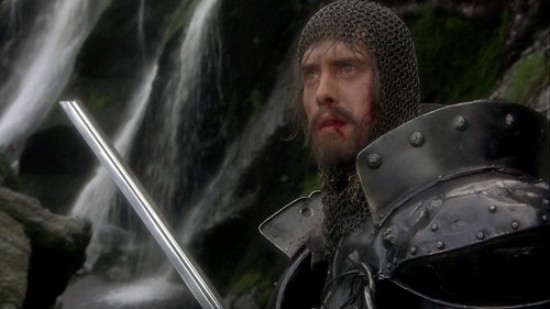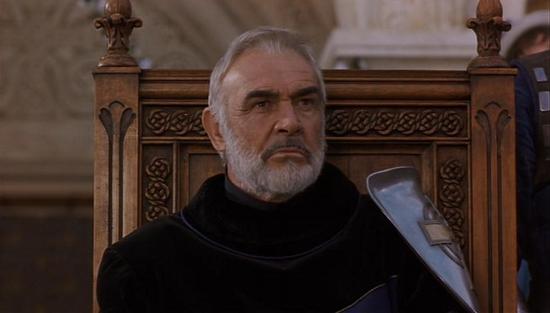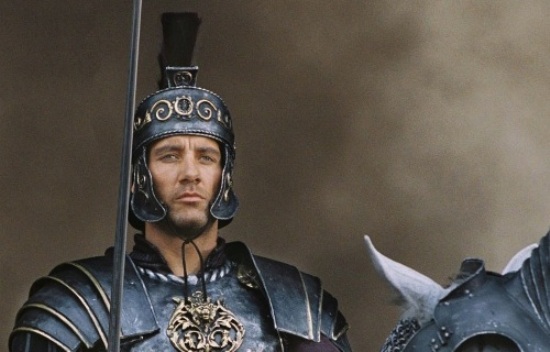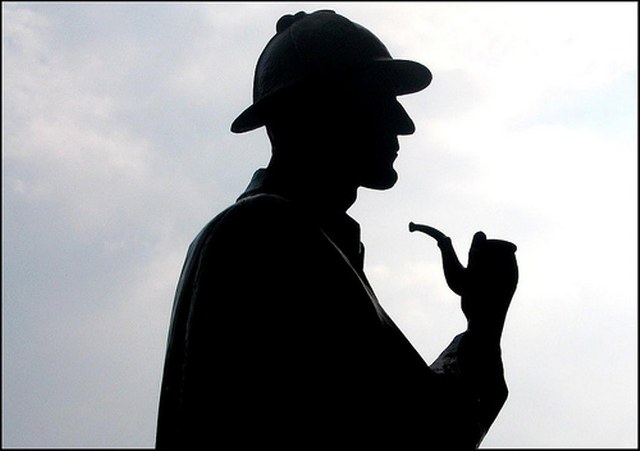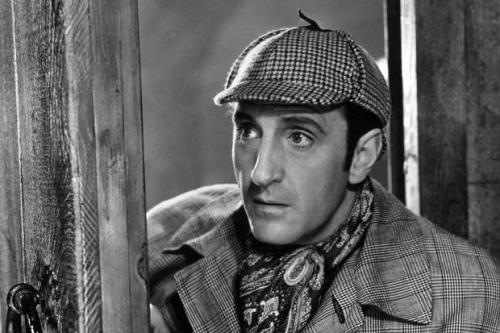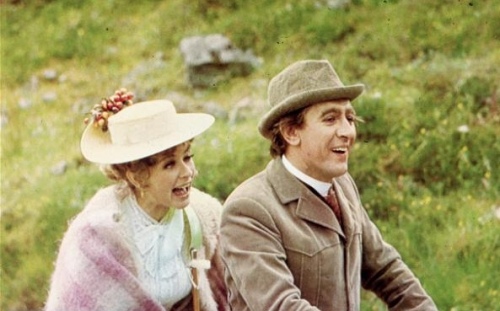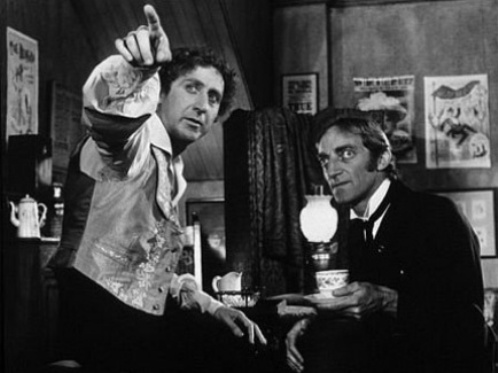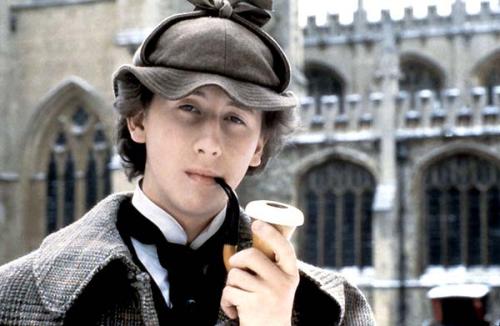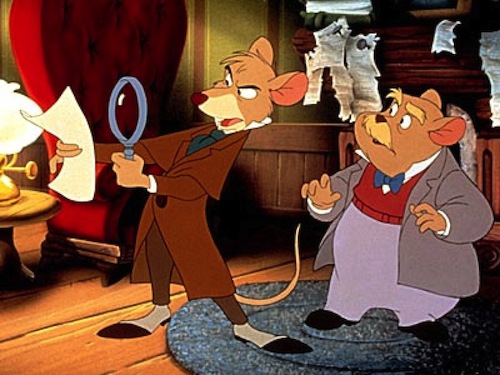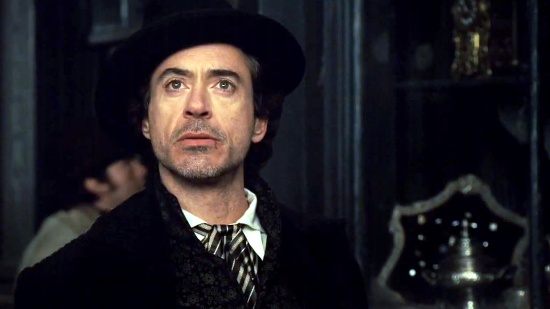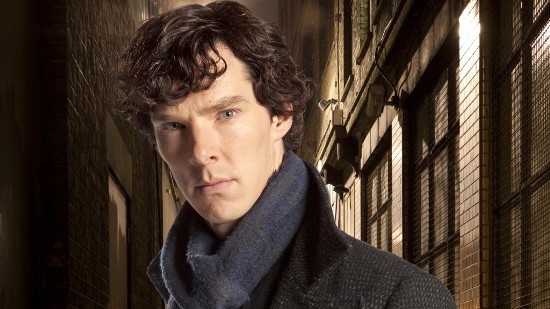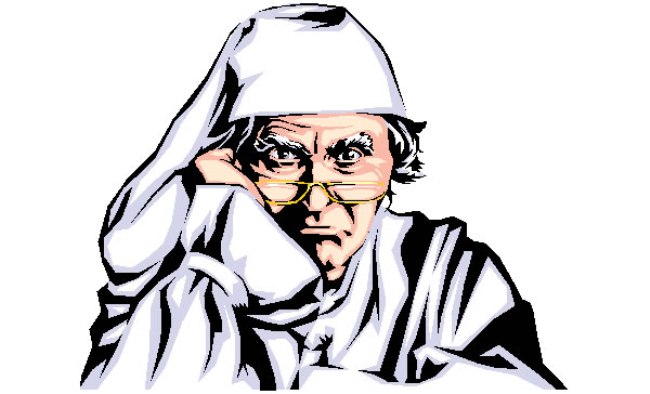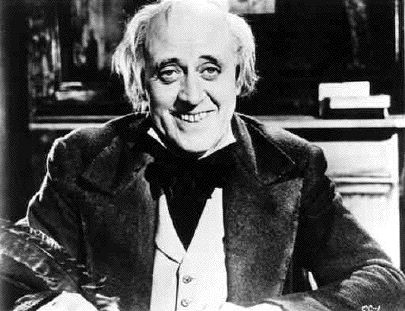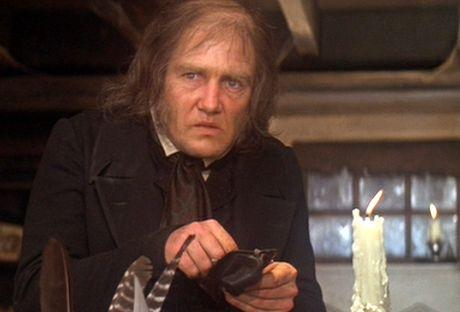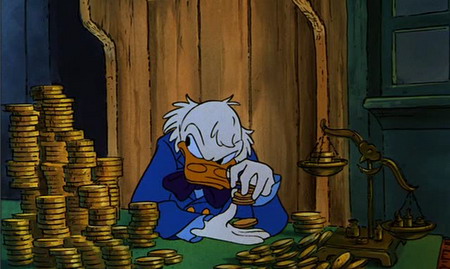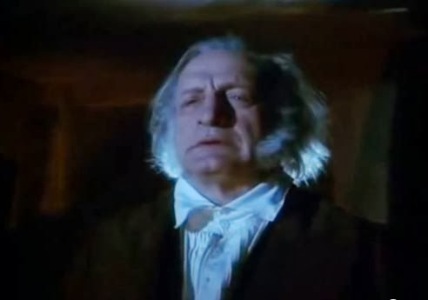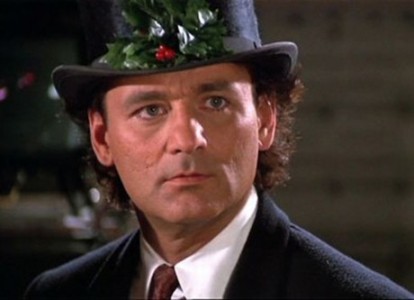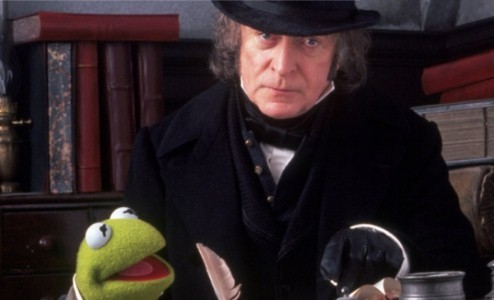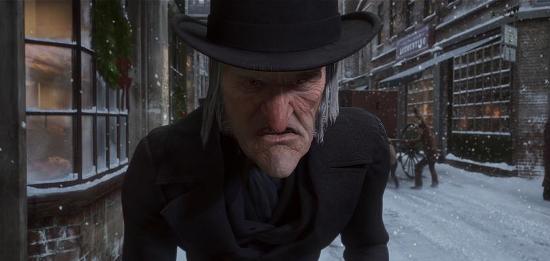Around the turn of the 20th century, before cinema became the dominant form of entertainment in our culture, pulp novels and comic strips was where you would find story-tellers presenting grand adventures in far off exotic places. During this period of time, you would’ve seen a flourish of imagination and invention in print from the minds of great writers like H.G. Wells, Jules Verne, and Arthur Conan Doyle; men who not only dreamed of fantastical worlds here on earth, but also out in the cosmos as well. But, it wasn’t just these European authors who were crafting these grand adventures for readers around the world. An American author by the name of Edgar Rice Burroughs was also becoming a popular name in adventure story-telling. Burroughs was something of an adventurer himself, having been raised in the American West his whole life, and many of his travels across the wilds of frontier probably had an influence on his writing later on. When he began his career as a writer, he created two characters that would come to define his body of work and leave a legacy for years to come. Those characters would be John Carter of Mars and Tarzan, the Ape Man. Of course, Burroughs publications could not have come at a more opportune time, because just as the John Carter and Tarzan novels were hitting the shelves, movie cinemas were coming into existence and Burrough’s novels provided the perfect material for adaptations. Strangely enough, it was Tarzan who would make the quick transition to cinema and not John Carter. Carter had to wait nearly a hundred years for his first trip to the big screen; the disastrous 2012 film from Disney that now stands as one of the biggest flops in film history. But, while Carter has faded from memory, Tarzan has remained relevant, and continues on to today.
And it’s a wonder given Tarzan’s limitations as a character. He speaks very little and he stays more or less the same person, although he does learn more as time passes. Tarzan’s story revolves around the common nature vs. nurture concept, where a human being is raised by apes in the jungles of Africa and grows up to become more animal than man. What’s more, when he finally encounters other human beings, he reacts to them in ways that go beyond normal human societal interactions, mainly because he’s never learned anything about manners or human boundaries. All the things that makes a human being function in society is absent in Tarzan, because all he knows are the rules of the jungle. But even despite this, Burroughs also examines through the character what makes all of us human at our most instinctual levels, which mainly comes through in Tarzan’s curiosity and through his compassionate ability to love, especially when he encounters his beloved companion, Jane Porter. Without Jane’s interactions in the story, Tarzan would have come across as a feral animalistic character, and by growing the bond between the two, we see an interesting contrast between a Tarzan who was raised in the wild and a Tarzan who has been civilized by society. Burroughs shows us that society has constructed all humans based upon it’s own standards, but when you take all of that away, you see what really make us all the same down to our core. We are all curious creatures and compassionate people who do what we can to survive, and it’s only societies expectations that makes us different from one another. Now, as Tarzan has made it to the big screen, some of those concepts have translated over, thanks in small part to the guiding hand of Burroughs on some films, while others have missed the mark completely. In this article, I will be looking at some of the notable interpretations of the character on the big screen, and see how well they have translated Burrough’s vine-swinging hero over the years.
ELMO LINCOLN in THE ADVENTURES OF TARZAN series (1918-1927)
From it’s first publication in 1912, it didn’t take long for the Tarzan series to make it to the screen. In 1918, audiences got their first glimpse of the famous character in action. The role was filled by actor Elmo Lincoln, whose muscular physique probably helped him in getting the part. Lincoln certainly has the build for the character, although his age proves a little problematic, given that he’s a bit too mature to be playing the more youthful and agile hero. But, at the same time, the silent production is fairly limited in scope, so Lincoln’s portrayal here perhaps fits more into the design of what the filmmakers had to work with. He does capture some of that wildness of the character, as well as some of his wide-eyed wonder of the outside world. But at the same time, the movie’s limited narrative prevents us from ever delving deeper into the character, and I’m sure that much of the intent behind the film was just to bring Tarzan from one fight scene to another. Still, it proved to be as popular as the novels and Elmo Lincoln would continue playing the character in four more movies, the last being The King of the Jungle (1927). And Lincoln’s status as cinema’s first Tarzan still is significant considering how long a legacy the character has had in the movies.
JOHNNY WEISSMULLER from TARZAN THE APE MAN Series (1932-1948)
Not long after the silent Tarzan’s did we get our first talky, as well as a new actor donning the loin cloth who would leave an indelible impact on the character for years to come. Johnny Weissmuller was an Olympic swimmer before he won the part of Tarzan, and no doubt his athletic build played a part in that casting. The remarkable thing about his performance though is how well Weissmuller fits into the role. Truly, Weissmuller plays the part of Tarzan so well, that it’s as if he was always meant to be the character. He’s savage but also sweet and he exudes incredible charm in the role. Playing perfectly off of his co-star Maureen O’Sullivan (in the role of Jane), Weissmuller brought the character fully to life and more than anything, also managed to be true to Edgar Rice Burrough’s original intent with the character; at least with the first couple films in the series. When we usually think of the character of Tarzan today, more than likely this is the version of the character that pops into mind, and that’s a good sign of Weissmuller’s legacy as the character. Weissmuller also added something to the character that was completely original and not from the original text at all; this being Tarzan’s famous yell. In addition to being a world-class swimmer, Weissmuller was also known for his ability to yodel, which he somehow managed to work into the film fo the better. Now, because of Johnny’s contribution, we expect that trademark yell to come from the character in every outing. Sometimes Weissmuller’s own recordings get recycled when an actor can’t pull off the yell. Weissmuller would play the character in 12 films over 16 years, which is a feat that is still unmatched to this day.
LEX BARKER from TARZAN Series (1949-1953)
Not to let their prized franchise go after Johnny Weissmuller called it quits in 1948, parent studio RKO looked to recast the character, and they did with rising actor and war veteran Lex Barker. Though Lex shares a physique similar to that of Weissmuller, his performance as the character lacks the same charisma. This is more due to the fact that the filmmakers were running out of ideas for the character on the big screen, and less so to do with Lex’s talents as an actor. Truthfully, Lex got better as the character as the series went along, but he only ended up making 5 films in the end. Still, it came at a time when the series was getting campier and more outlandish, putting Tarzan in situations that strayed far from the original novels. To Lex’s credit, he did keep true to the character by making the physical action scenes intense and believable as well as displaying much of the humanity of Tarzan in the quieter moments. The Tarzan films continued to be popular during his time, but it was short lived considering that the television era was right around the corner. Tarzan would make the transition to the small screen as well, but Lex’s time as the character was limited to his big screen appearences. His time as the character would also mark the last of the classic era Tarzan story-lines, which more or less stayed consistent over the years in that classical Hollywood sense. The adaptations that followed would stray off in very different directions and would also be reflective of the eras that they were made.
MIKE HENRY from the TARZAN Series (1966-1968)
Made after several lesser adaptations for TV and film, the next big attempt at adapting the character came in the late 60’s, with muscular action star Mike Henry in the role. This is a considerably different kind of Tarzan, played more as a lustful strongman rather than the playful jungle crusader that Weissmuller and Barker portrayed him as. Henry’s performance also strangely gives him a full vocabulary, which is a departure from the “Me Tarzan, You Jane” days of the character. This is probably because of the campy style that the filmmakers were trying to go for. Here, Tarzan’s more Superman than Ape Man, defending the jungle as it’s savior. Unfortunately, Mike Henry’s talents as an actor are limited and he’s more or less there to fill the image of the character rather than give it any depth. The trio of film’s that Mike Henry starred in definitely have a campy 60’s feel to them, and you can imagine many of these same kinds of story-lines playing out on a weekly TV series as well. The production values of the movie also reflect a time where filmmakers were starting to move away from the studio system and were doing things their own way. The best thing you can say about these 60’s Tarzan movies is that they brought the series out into the wild. Most scenes were actually filmed out in a real jungle and not on a soundstage, which does help to make it feel more genuine. If only that same care was given to making the character feel more authentic.
MILES O’KEEFFE from TARZAN, THE APE MAN (1981)
Considering the 1970’s were a period of free expression and sexual awakening, it seems natural that a film centered around Tarzan would be reflective of that. Probably the only film in this retrospective to focus solely on the relationship between Tarzan and Jane, Tarzan, The Ape Man is also by far the most sexually explicit. What’s interesting is that this is a film told from Jane’s point of view, which gives us an interesting look into how someone from the modern world observes and reacts to a being like Tarzan. Of course, due to the nature of this movie, Tarzan is mostly observed by Jane (Bo Derek) as an object of desire. The film is not pornographic, but it definitely doesn’t shy away from the subject matter either. There are plenty of scenes in this movie that are meant to titillate the audience, but strangely enough they actually work within this film. Miles O’Keeffe does bring the character back to his more primitive roots and as a result makes the character of Tarzan more likable. Observed through Jane’s perspective, we come to understand why she sees this strange being as someone who should be loved rather than feared. The production of the film also backs up the erotic nature of the film, by capturing the lavishness of the jungle setting. The film does deliver on it’s R-rated promise of a mature retelling of Burrough’s original story. Not only that, but it also gives us a Tarzan who looks and acts the part closer than what had been done before. If only the film captured more of what the character was about that what he represents, which in this film is more or less a sexual object.
CHRISTOPHER LAMBERT from GREYSTOKE: THE LEGEND OF TARZAN, LORD OF THE APES (1984)
As blockbuster and prestige film-making began to become more prevalent in the 1980’s, many filmmakers started to look for older properties that would be worthy of an update for modern audiences. And while Tarzan never really disappeared over the years, director Hugh Hudson saw something untapped in the character’s back-story that he thought would be worthy of adaptation. In Greystoke, we look more into Tarzan’s origins, and how he became who he is. Taking the cue from Burrough’s own novels, we learn that Tarzan is actually a descendant of one of England’s most affluent and influential families, and his disappearance was the result of him being the only survivor of a shipwreck off the African coast. Long thought dead, Tarzan grew up raised by a pack of gorillas and has learned to live as one of them for all the years since. An expedition that includes Jane Porter (Andie McDowell) finds him in the wild and they attempt to bring him back to England and civilize him so that he can claim the inheritance that he’s due; a task that proves to be more difficult than they realize. The great thing about this film is that it’s the first really earnest attempt to capture the spirit of the original novels, rather than exploiting it for entertainment purposes. Lambert looks the part and tries his best to capture the spirit of the character. Unfortunately, despite it’s lavish production values, the movie does drag quite a bit, especially when the focus is off of the main character. Still, Lambert does make Tarzan an interesting character here and the film is a gorgeous production that while not very exciting, is still the most interesting movie in the series thus far.
TONY GOLDWYN from DISNEY’S TARZAN (1999)
It may seem unusual for Disney animation to take a chance on adding the King of the Jungle to their roster of characters, but when you see the way Tarzan swings effortlessly through the trees in this film, you can understand why they did it. Indeed, Tarzan may have always been destined to be an animated character, because only in that format can you capture his true agility in his natural environment. Disney Animation developed a whole new computer generated technique called Deep Canvas, which enabled the hand-drawn Tarzan to fly freely through CG-animated and painted backgrounds in a truly spectacular way. But apart from the artistic achievements of the film, the movie also manages to make a memorable Tarzan as well. Actor Tony Goldwyn does an effective job of voicing the character, being both funny and heartfelt, without ever feeling false. He especially captures the playfulness of the character in his vocal performance, and makes Tarzan feel consistent throughout, whether he is speaking to the the human characters or to the apes. The fact that the apes can talk back in this film is another benefit to having an animated Tarzan. Disney’s Tarzan also pays tribute to past versions, with the famous Weissmuller yell featured prominently in this film. Time will tell how this one stands up against other classic versions of the character, but there’s no doubt that Disney’s take on the character is certainly one of the finest.
Edgar Rice Burrough’s classic character has certainly left a strong impression over the years, and I’m sure that he will continue to be around for a long time to come. The interesting thing is that Tarzan can be perfectly molded into any time period that you want to put him in. While the classic versions, as well as the Disney and Greystoke adaptations, set their story-lines in the same Victorian era that the books were written in, there are others like the 1981 Tarzan that brings the character up to the modern day. Likewise, a new animated film from Germany is currently playing in limited release right now and it too has also brought the character into a contemporary setting. The reason why Tarzan seems so adaptable to different time periods is probably because of the timeless nature of his story. Indeed, the concept of someone growing up in the wild is not too outlandish. We’ve heard about many cases of feral children being found in the wilderness over the years, so the idea of a man raised by apes can seem logical, albeit still purely in the realm of fiction. What I see from all of his cinematic interpretations is a heroic character that feels believable while at the same time extraordinary. And Tarzan is certainly at his best when the movies stay true to what Edgar Rice Burrough’s intended for the character. My hope is that many filmmakers take that idea to heart and keep the Ape Man swinging for many years to come.
